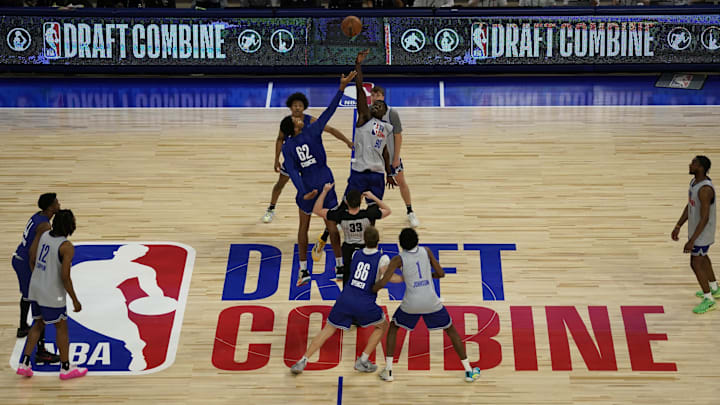3. The Leapers
The other part of the NBA Draft Combine is we get to see clearer measurements of pure athleticism. We get the wingspans and the measurements. But we also get to see them in drills that test agility and athleticism.
It is at least a hint of the raw canvas on which teams can draw in terms of athleticism. That is a skill that is difficult to teach. Although translating it directly into something teams can use is another challenge.
Still the players who stood out in athleticism matter. They are at least names to put on the radar.
It starts with Providence guard Devin Carter, who had the top vertical leap at 42.0 inches and the top standing vertical leap at 35.0 inches. Carter was also third with a 10.63-second run through the lane agility drill and a 2.90-second run through the shuttle drill. He had the fastest three-quarter court sprint at 2.87 seconds.
The 6-foot-3 guard averaged 19.7 points per game and 8.7 rebounds per game last year. That shows he uses his athleticism to play bigger in the paint. He shot 37.7 percent from three last year and was a career 72.3 percent free throw shooter.
His biggest question is his shooting. But he is clearly an athlete who knows how to use his ability to ping around.
Tristan Da Silva, as mentioned before, is one of the favored targets for the Magic among media members. He had a 10.81-second run through the lane agility drill, trailing only G-League Ignite prospect Tyler Smith among power forwards.
Of note on this front is who did not perform well.
Jared McCain had a vertical leap of only 25.5 inches. That was the same as Kansas forward Johnny Furphy. His 32.0-inch standing vertical leap ranked among the lowest in the Combine. He was joined at that mark by Miami forward Kyshawn George.
